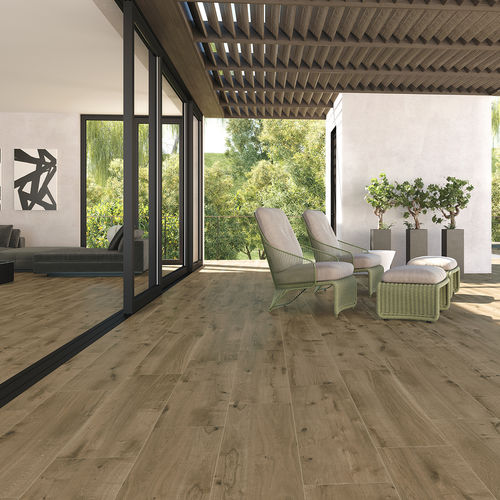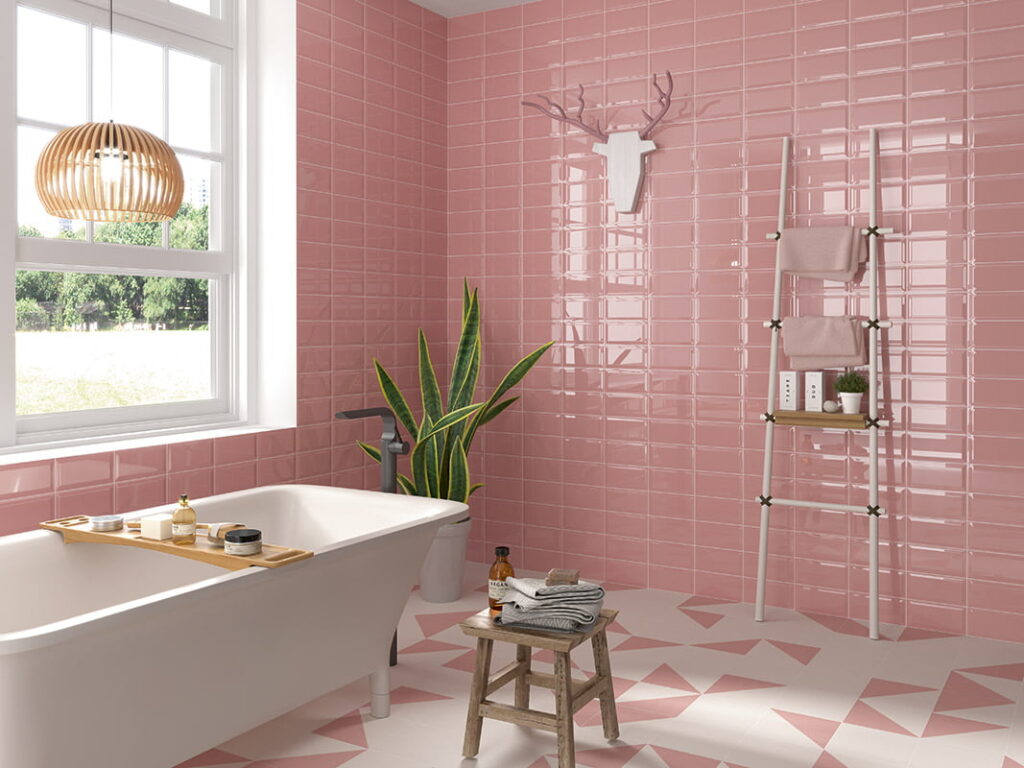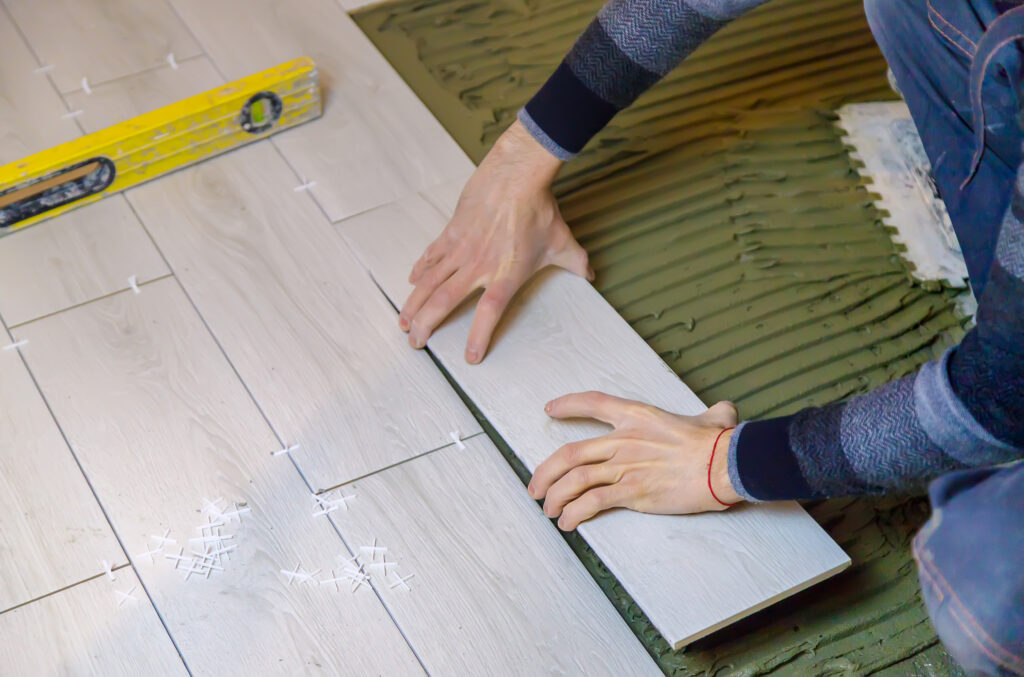Porcelain floors have become one of the most demanded options in the world of construction and interior design. Their combination of aesthetics, resistance and durability makes them ideal for both homes and businesses. At ParaTuReforma.com, we know how important it is to choose the best flooring for each project. Therefore, in this article we explain in detail what porcelain floors are, their advantages, types, uses and everything you need to know before installing them in your home or business.
What is a porcelain floor?
Porcelain tile is a type of ceramic flooring made from a mixture of clays and minerals fired at extremely high temperatures. This process gives it high strength, low water absorption and long durability. Unlike conventional ceramic tile, porcelain tile is more compact and dense, making it ideal for high traffic areas and outdoor spaces.
Main characteristics of porcelain floors
Porcelain floors stand out for a series of properties that make them unique:
- High resistance: Withstand impacts, abrasion and intense traffic.
- Low porosity: They absorb less water than other types of ceramics, which makes them ideal for humid areas.
- Versatility: Suitable for indoor and outdoor use, available in a wide variety of finishes.
- Easy maintenance: They do not require special treatments and are easy to clean.
- Aesthetic variety: They can imitate materials such as wood, natural stone, marble or cement with great realism.
At ParaTuReforma.com we have a wide selection of porcelain floors for you to find the perfect design for your project.

Differences between porcelain and ceramic flooring
Many people confuse porcelain tile with traditional ceramic tile floors, but there are key differences:
- Water absorption: Ceramic tile has a high water absorption (5-10%), while porcelain tile has a minimal absorption (less than 0.5%).
- Resistance: Ceramic tile is less resistant, while porcelain tile has high resistance to shocks and wear.
- Recommended use: Ceramic tile flooring is recommended for interiors, while porcelain tile is suitable for both interiors and exteriors.
- Durability: Ceramic tile has medium durability, while porcelain tile has very high durability.
- Price: Ceramic tile flooring is more economical, while porcelain tile is a long-term investment.
If you are looking for a durable, versatile and resistant material, porcelain tile is the best option. In ParaTuReforma.com we can advise you on which is the best for your space.
Types of porcelain floors according to their use
There are porcelain floors designed for different uses.
For interiors, they are ideal for kitchens, bathrooms, living rooms and bedrooms, offering elegant and easy-to-clean surfaces.
For exteriors, porcelain floors are manufactured with non-slip finishes and greater resistance to inclement weather, making them perfect for terraces, patios and gardens.

Types of porcelain floor according to finish
- Bright: It brings brightness and elegance to the spaces. It is perfect for interiors with a modern style.
- Matte: It has a more sober and natural finish, ideal for spaces with a rustic or minimalist aesthetic.
- Polished: Smooth and sophisticated surface, ideal for elegant and contemporary environments.
- Anti-slip: Designed for wet areas such as bathrooms, swimming pools or outdoors, where safety is a priority.
In ParaTuReforma.com you will find all these options with the best quality in the market.
Popular porcelain floor designs
Porcelain tiles have evolved in design and offer very realistic imitations of different materials:
- Imitation wood: Perfect for those who are looking for the warmth of wood with the resistance of porcelain tile.
- Marble effect: It brings luxury and sophistication to any room.
- Imitation natural stone: Ideal for exteriors or rustic spaces.
- Cement effect: Widely used in industrial and modern styles.
- Hydraulic designs: With geometric and vintage patterns to give a decorative touch.
If you want to know the latest trends in porcelain flooring, visit ParaTuReforma.com and find the design that best suits your style.
Available colors and formats
Porcelain floors come in a wide variety of colors and sizes.
- Neutral colors (gray, white, beige) are the most demanded for their versatility.
- Dark colors such as black or brown add elegance and depth.
- Bright colors (blues, greens, terracotta) for those seeking originality.
In terms of formats, the most common are:
- 60×60 cm (standard)
- 30×60 cm (rectangular, ideal for bathrooms)
- 80×80 cm or more (large format, greater visual continuity)
In ParaTuReforma.com we have a wide variety of sizes and colors for you to choose the one that best fits your project.
How to install porcelain tile flooring correctly
For a long-lasting and trouble-free installation, follow these steps:
- Prepare the surface: It must be clean, level and dry.
- Choose the right adhesive: A special tile adhesive for porcelain tile ensures good adhesion.
- Lay the tiles: Use spacers to maintain a uniform joint.
- Grout: Fill the joints with a suitable material to prevent leaks.
- Final cleaning: Remove adhesive residue and dirt with a damp sponge.
If you need more information about installation materials, ParaTuReforma.com will advise you without obligation.

Maintenance and cleaning of porcelain floor
- Daily cleaning: With water and neutral detergents.
- Avoid aggressive products: Do not use waxes or oils, as they can leave slippery residues.
- For difficult stains: Use specific products recommended by manufacturers.
By following these tips, your porcelain floor will remain in perfect condition for years to come.
Porcelain floors are an excellent choice for their resistance, design and ease of maintenance. Whether for interiors or exteriors, you will find a wide variety of finishes and formats to suit any project.
In ParaTuReforma.com we have a wide selection of high quality porcelain floors. Visit our online store and discover the best options for your reform.
Frequently asked questions about porcelain flooring
Are porcelain floors cold?
They can be cold to the touch, but are compatible with radiant heating systems, making them ideal for cold climates.
Are porcelain floors slippery?
Depends on the finish. Non-slip models are safe for wet areas.
Can they be placed over an existing floor?
Yes, as long as the previous surface is in good condition and well leveled.


